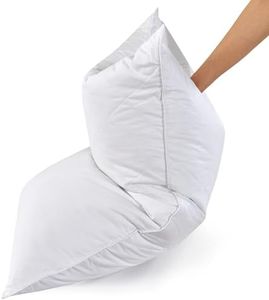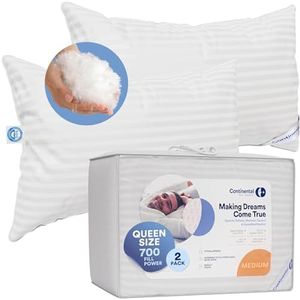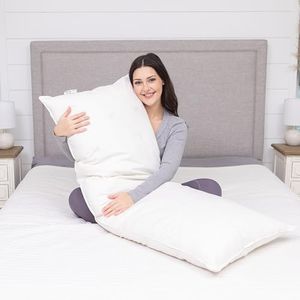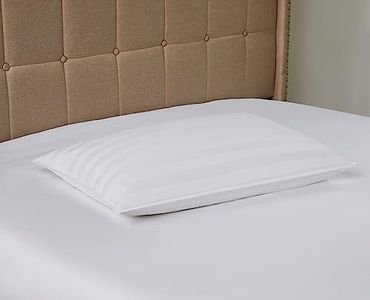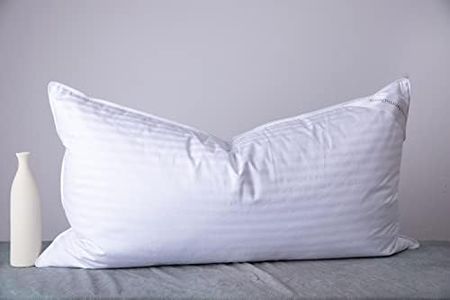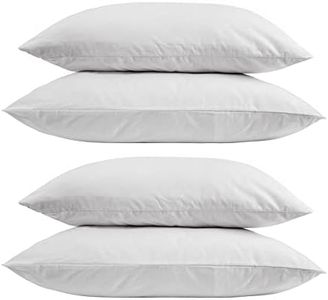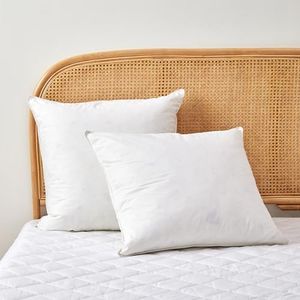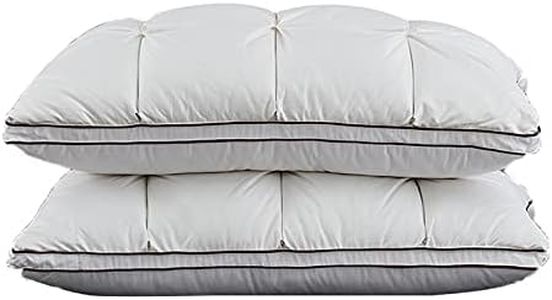We Use CookiesWe use cookies to enhance the security, performance,
functionality and for analytical and promotional activities. By continuing to browse this site you
are agreeing to our privacy policy
10 Best Goose Down Bed Pillows
From leading brands and best sellers available on the web.Buying Guide for the Best Goose Down Bed Pillows
Choosing the right goose-down bed pillow can make a big difference in your sleep quality. It's important to focus on the pillow's comfort, support, and its suitability for your preferred sleeping position. The right pillow will keep your neck and spine aligned, feel soft yet supportive, and last for years if well cared for. Understanding the key features helps you match a pillow to your personal needs and sleeping habits, enhancing both comfort and health.Fill PowerFill power measures the fluffiness and insulating ability of the down inside the pillow, usually shown as a number (like 600, 700, or 800+). A higher fill power means the down clusters are larger and can trap more air, so the pillow will be softer, loftier, and more durable. Lower fill power (under 600) means a flatter, less resilient pillow, while higher fill power (700 and up) gives a plush and more supportive feel. Side sleepers may prefer higher fill power for more loft, while stomach sleepers often do better with lower fill power so the pillow isn't too thick.
Down-to-Feather RatioThis spec tells you how much of the filling comes from soft goose down compared to sturdier feathers. Higher down ratios (like 90% down/10% feather or above) mean a softer and lighter pillow that molds easily to your head and neck. Lower ratios (such as 50% down/50% feather) mean the pillow will feel firmer and may be heavier. If you like a plush, luxurious feel, look for pillows with more down. If you want a bit more structure or aren't as concerned with softness, a lower down ratio will work.
Firmness LevelGoose-down pillows come in soft, medium, or firm varieties, which refers to how much support they give. Soft pillows are best for stomach sleepers who need their head to stay close to mattress level. Medium pillows work well for back sleepers, providing a balance of comfort and support. Firm pillows suit side sleepers, who need extra lift to keep their neck aligned. Your preferred sleeping position is the main guide here: choose firmness based on how much height and support your head and neck need overnight.
Cover MaterialThe outer fabric, often called the shell, holds the down in place and affects both comfort and durability. Most goose-down pillows use tightly woven cotton, measured in thread count. Higher thread counts (300 and above) feel smoother, are more breathable, and do a better job of keeping the down from poking through. Low thread count covers may leak filling or feel rougher. If you have sensitive skin or allergies, look for pillow covers labeled as hypoallergenic or tightly woven.
Pillow SizePillows come in standard, queen, and king sizes, matching various bed sizes and personal preferences. Standard size fits most people and beds, queen size gives extra length, and king size is extra long and wide. If you move around at night or have a larger bed, you might want a bigger pillow. For small beds or if you just want a compact feel, a standard size often works best.
Allergen ProtectionSome goose-down pillows are specially treated or encased in extra-tight fabric to reduce allergens like dust mites and mold. These are ideal if you have allergies or sensitivities. If allergies are a concern, look for pillows marked as hypoallergenic or with extra barrier features. If not, a standard pillow with a washable cover might be enough.
